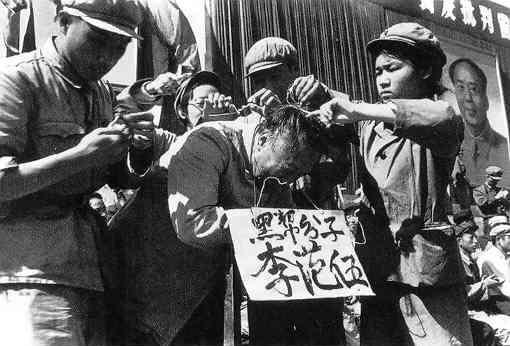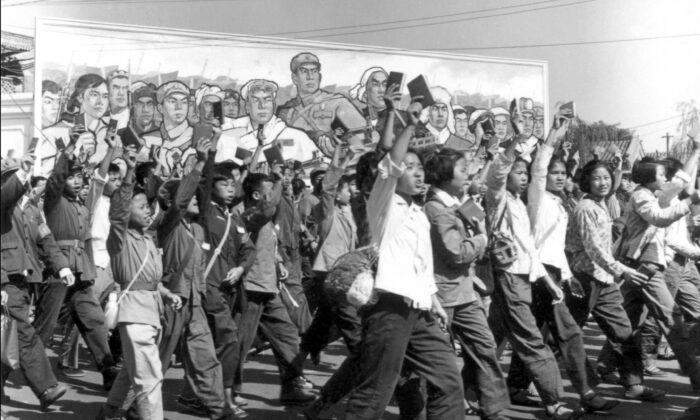Commentary
How do you stop a lynch mob? With a Winchester repeating rifle. That was the advice of Ida B. Wells, the great journalist who led the fight against lynching. To frustrate her work, a new form of gun control was introduced.
By the late 19th century, the United States had a long record of lynchings. The purpose of a lynch mob was to thwart the criminal justice system. Many lynch mobs broke into jails, and abducted persons who had already been arrested and were in custody. The year 1886 was the first that more blacks than whites were lynched, and lynchings increased sharply in the South for the next several years.
For a while, much of the U.S. population did not approve of lynching, but accepted the claim that Southern lynching was a sort of rough justice against black criminals, especially rapists.
Wells, the leading anti-lynching advocate of the late 19th and early 20th centuries, denounced Southern lynchings in fiery editorials. The office of her newspaper, the Memphis Free Speech, was destroyed by a mob after an editorial intimating that the frequent charge of rape, often coming long after the purported fact, raised as many questions about white women as about black men.
Exiled from Memphis, Wells gained wider recognition writing for the nation’s leading black newspaper, the New York Age, and lecturing throughout the North, the West, and Great Britain. As she would show, only about a third of lynchings involved even alleged rape, and in many of those cases, the sexual relations had been consensual. Partly because of Wells, lynchings of blacks declined steadily and sharply during the next several decades, although they didn’t disappear.
Buy a Winchester
In 1890, John R. Mitchell Jr., vice president of the National Colored Press Association, urged blacks to buy Winchester rifles to defend their families against ‘‘the two-legged animals ... growling around your home in the dead of night.’’ At the urging of Wells and others, many Southern blacks had begun to emigrate to Oklahoma, a federal Indian territory that was being opened to non-Indian settlement.There they formed self-defense associations, and deterred violence against them, including from Native Americans who were against ‘‘Africanizing Oklahoma.’’ One black journalist reported, ‘‘I found in every cabin visited a modern Winchester oiled and ready for use.’’
On June 25, 1892, Wells penned an iconic article for the New York Age, which was reprinted as a nationally circulated pamphlet, “Southern Horrors.” After noting cases in which lynch mobs had been defeated by armed blacks, Wells continued: “The lesson this teaches and which every Afro-American should ponder well is that a Winchester rifle should have a place of honor in every black home, and it should be used for the protection which the law refuses to give.
“When the white man who is always the aggressor knows he runs as great a risk biting the dust every time his Afro-American victim does, he will have greater respect for Afro-American life. The more the Afro-American yields and cringes and begs, the more he has to do so, the more he is insulted, outraged, lynched.”
Wells’s article provoked furious denunciation from the Southern white press.
Why were Winchester rifles so prominently mentioned? At the time, Winchester held 29 percent of the U.S. firearms and ammunition market. Winchester had introduced the first mass-market repeating rifles: the 1861 Henry, and then the Winchester Model 1866. Next, came the Winchester model 1873, ‘‘the gun that won the West,’’ and many other popular repeating rifles and shotguns.
Winchester wasn’t the only company making excellent, reliable, and affordable repeating long guns; Colt, Marlin, Stevens, Remington (America’s oldest continuously operating firearms company, founded in 1824), and many others were prominent. But ‘‘Winchester’’ became to some people a shorthand for ‘‘repeating rifle,’’ just as some people said ‘‘Colt’’ when they really meant ‘‘revolver.’’ Or today, say “Xerox” when they mean “photocopy.”
As for why Wells and her allies favored repeating rifles like the Winchester, the answer may be that such rifles were best for deterring a mob. The ammunition capacity of the tubular magazine (a tube underneath the barrel) was often somewhere in the teens, depending on the caliber. In a situation of one or a few blacks facing an angry mob of dozens of whites, repeating rifles were equalizers—at least Wells and others thought so.
Racist Gun Control
As Wells had pointed out, in 1892, armed black men in Jacksonville, Florida, thwarted a lynch mob that was attempting to break into a prison in order to murder a black prisoner. In the next legislative session, the Florida legislature enacted a new gun control law. It required a license to carry or possess ‘‘a pistol, Winchester rifle or other repeating rifle.’’This appears to be the first American statute that treated repeating arms differently from other arms. The 1893 Florida tradition is continued today by states such as California and Massachusetts, which ban many common repeating rifles and shotguns, and limit magazine capacity to only 10 rounds.
In the 1941 case Watson v. Stone, the Florida Supreme Court construed the statute narrowly. The court held that the statute didn’t apply to carrying in an automobile. Concurring, Justice Buford explained the racial background:
“I know something of the history of this legislation. The original Act of 1893 was passed when there was a great influx of negro laborers in this State drawn here for the purpose of working in turpentine and lumber camps. The same condition existed when the Act was amended in 1901 and the Act was passed for the purpose of disarming the negro laborers. ... The statute was never intended to be applied to the white population and in practice has never been so applied. ... [T]here has never been, within my knowledge, any effort to enforce the provisions of this statute as to white people, because it has been generally conceded to be in contravention of the Constitution and nonenforceable if contested.”
The statute was finally repealed in 1987. The repealed statute also initiated a national trend by enacting a ‘‘shall-issue’’ statute for concealed handgun carry licenses. Licenses must be issued, or denied, depending on whether the applicant meets specified statutory criteria, based on criminal records history, training that meets certain standards, and other objective factors.
Today, as in 1893, some but not all gun control advocates are consciously or subconsciously racist. In modern campaigns against Americans who own repeating arms, some advocates spew hateful racial stereotypes. They are part of a long tradition that gun control is a form of race control.
David Kopel is an adjunct scholar at the Cato Institute in Washington. This article is adapted from his textbook “Firearms Law and the Second Amendment.”
Views expressed in this article are opinions of the author and do not necessarily reflect the views of The Epoch Times.





